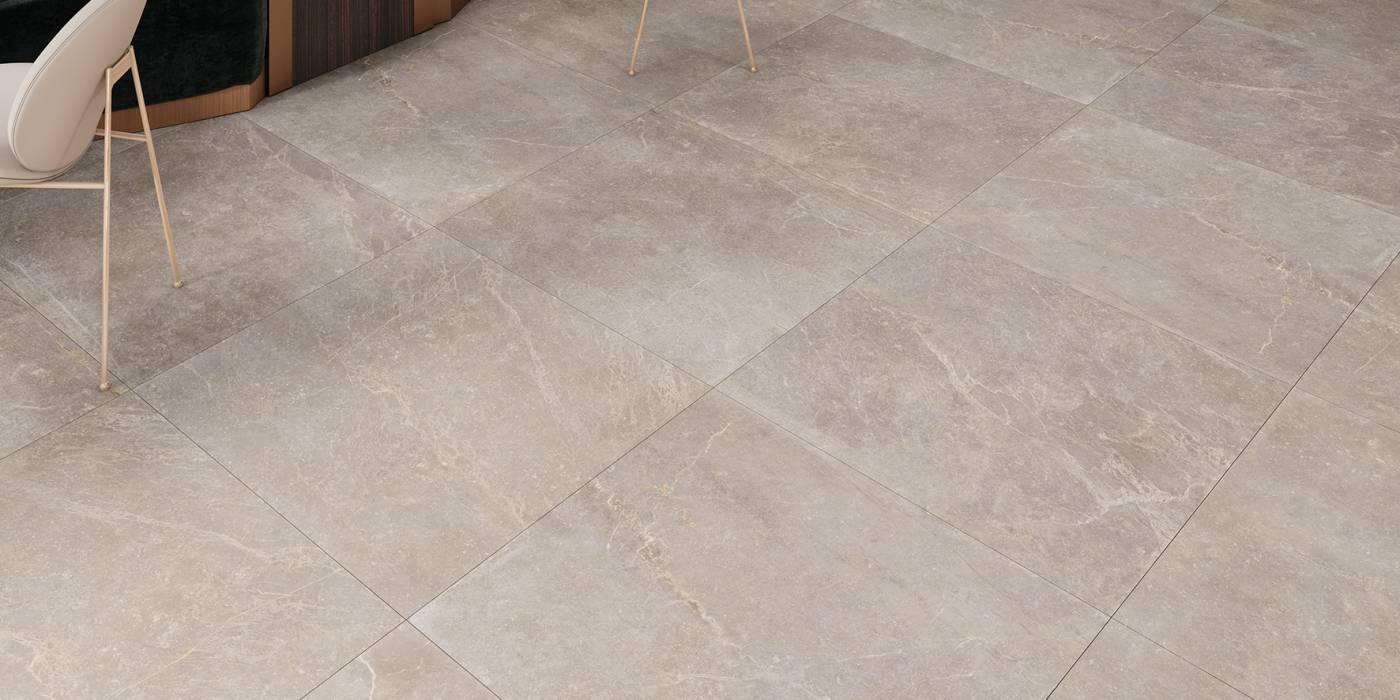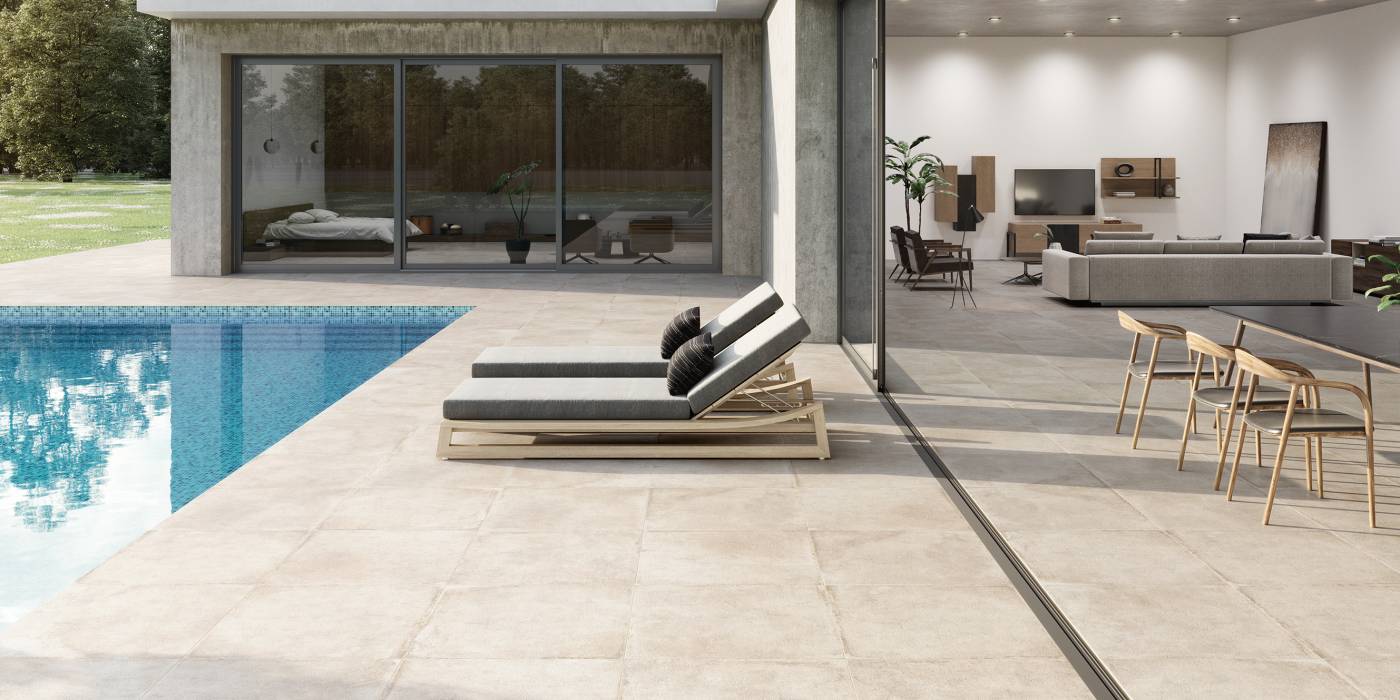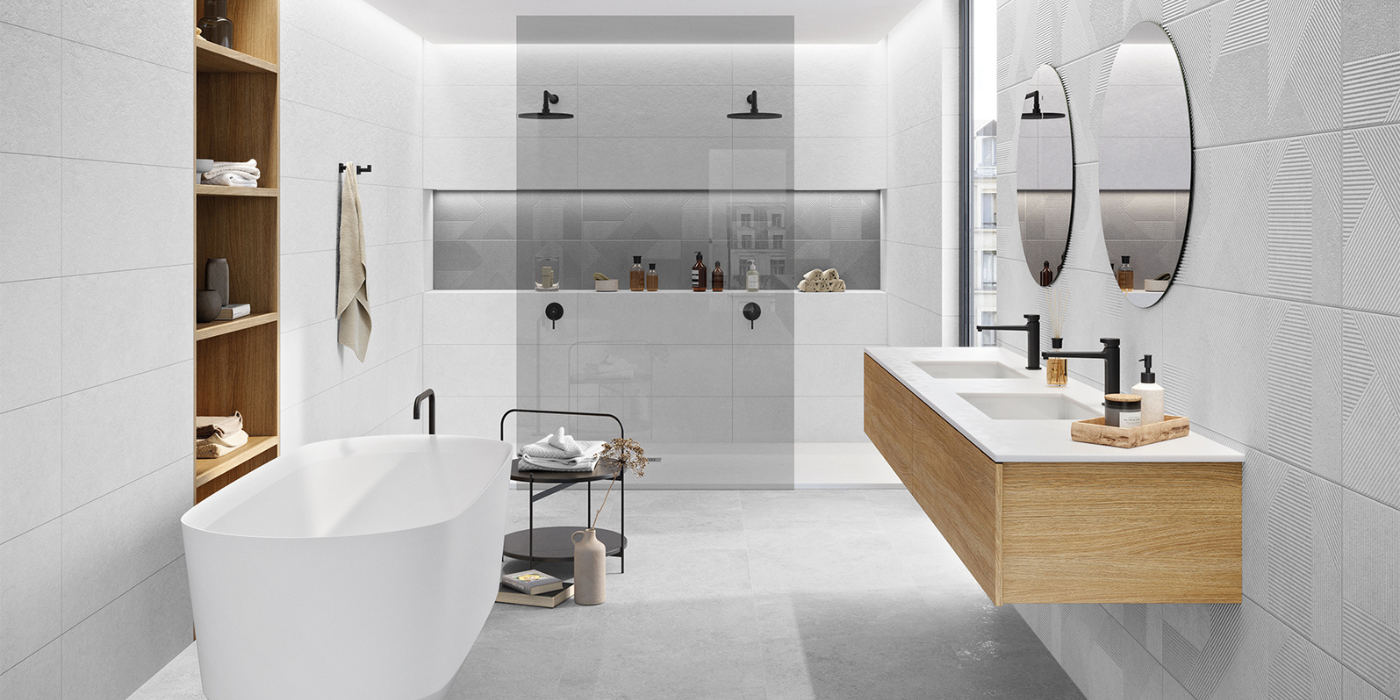Tips
The 5 most-frequently-asked questions about ceramic tiles
Finding the ideal flooring for your home, the one you have always dreamed of and that will decorate your entire house for years, may seem like a challenge. Deciding on the best material according to its technical and aesthetic characteristics is not easy.
To help you, we want to resolve all your doubts about ceramics in this article. With this in mind, we are going to answer the 5 most-frequently-asked questions that our customers ask us about ceramic tiles.
1. What is the difference between ceramic and porcelain?
One of the main doubts about ceramic tiles is whether they are the same as porcelain. Do they have the same characteristics? What is the difference between them?
As they are similar, these two materials are spoken of as if they were the same and this can cause a lot of confusion. But they are different and we are going to tell you why:
- Porcelain tiles are pressed under higher pressure and fired at a higher temperature, which makes them a denser product and, therefore, more resistant and durable. This is the reason why they are ideal for installation as interior or exterior flooring.
- Ceramic tiles are more porous, and, therefore, their water absorption is higher than porcelain. This allows them to be better fixed on vertical walls by facilitating the setting of the mortar, but it prevents them from being used outdoors (terraces, façades, etc.), where they could absorb rainwater, suffer breakage due to frost or extreme temperatures. For this reason, porcelain is the material most recommended for outdoor use.
- Porcelain tiles are more difficult to cut and drill during installation and use. To cut a porcelain tile, it is necessary to have a special diamond blade and a specific drill.
As for the available designs, although both offer a wide variety of styles, the variety of porcelain formats is greater, these being larger than in the case of ceramics.
 Bleuemix Taupe by Keraben
Bleuemix Taupe by Keraben
2. What is the PEI of ceramic tiles?
PEI stands for Porcelain Enamel Institute and is a scale that classifies the types of ceramics according to their resistance to surface wear.
The PEI of a ceramic is measured by rotating an abrasive load on top of the material to check its level of wear. Depending on the result, it is divided into grades, ranging from 0 to 5. The higher the PEI, the more wear-resistant the tile will be.
- PEI 0: Tiles with this specification are not suitable for floors, but they are suitable for wall coverings.
- PEI 1: The hardness is low, but this classification is valid for areas with little traffic, such as a home’s bathrooms.
- PEI 2: With a little more hardness, they are ideal for areas of the home far from the outside. For example, for the bedroom.
- PEI 3: This resistance is suitable for use in residential areas with a little more traffic, such as the living room or the kitchen.
- PEI 4: Commercial environments should not have a PEI below 4. This resistance is suitable for residential environments with a lot of activity or commercial spaces with little.
- PEI 5: The perfect choice for outdoors and also for commercial environments with a high flow of people.
 Cosmopolitan Beige by Metropol
Cosmopolitan Beige by Metropol
As you have seen, the PEI is something to take into account when choosing resistant flooring for the different areas of your home.
3. What is a rectified porcelain tile?
Rectified porcelain tiles have been lowered on their sides so that the contours are completely straight. In this manner, with a 90º angle on the edge, the joint between tiles is reduced to the minimum possible.
Large-format rectified porcelain tiles are ideal for spaces where joints are meant to be reduced, and this allows for a practically continuous appearance, improving the feeling of spaciousness.
 Verse White by Keraben
Verse White by Keraben
In environments where dirt in the joints can become a problem, it is necessary to use fungicidal and easy-to-clean grouts, such as in the bathroom, where humidity can lead to the appearance of fungi in some places.
4. What is the minimum joint for ceramics?
The minimum joint for ceramics is between 1.5 and 3 mm wide.
 Sunstone Concept Ice by Íbero
Sunstone Concept Ice by Íbero
Each tile format must have a different joint width depending on the space in which it is installed and the surface of the said space. In some cases, it can exceed 5 mm when it comes to a perimeter or expansion joint, or in outdoor spaces. The size of the joint is key to the correct functioning of the ceramic covering, in terms of its elastic behavior and the transition of steam and humidity.
The appropriate joint size for each case is indicated in the UNE 138002 standard.
5. What is the Mohs scale in ceramics?
The Mohs scale in ceramics orders the materials from lowest to highest hardness against scratching. Talc, being the easiest mineral to scratch, even with fingernails, is rated at type 1 hardness.
It is followed by plaster, which is more difficult to scratch (2); calcite (3); fluorite (4), which can be scratched with a knife; apatite (5); orthoclase (6); quartz (7); topaz (8); corundum (9) and diamond, which is the hardest mineral and has a classification of 10.
In general, the higher the ceramic's firing temperature, the higher its scratch resistance, and thus the higher its Mohs scale rating. For example, at hardness 1 we find the ceramic mass and at hardness 8 we find ceramics fired above 1,450 ºC.
Both ceramic and porcelain are materials with excellent technical characteristics to cover any room in the home.







